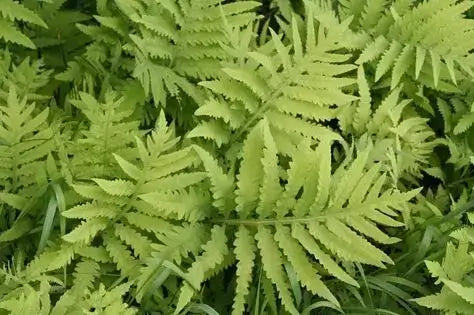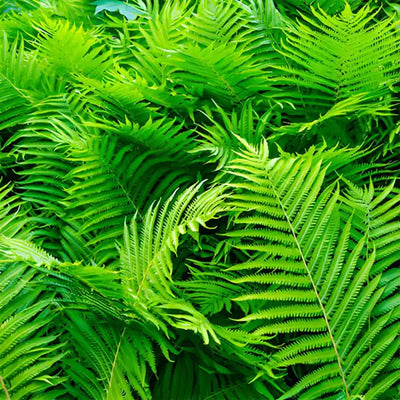Native Ferns Benefits
Apart from their beauty, native ferns offer numerous advantages, such as their capacity to remove pollution from the air. They also strengthen soils and create habitats for a variety of wildlife. This article will explore five environmental benefits of ferns; stay tuned!
Maidenhair ferns are a standard option for gardens with shade and woodland landscaping. The delicate ferns are covered in fringes that look like lace and can grow to the height of 18 inches. They are indigenous to the eastern region of North America and can be found in rocky slopes, woodlands, and wetlands. The appearance of ferns with maidenhair could fool you. They are small, fan-shaped leaflets that form one frond, creating what appears to be hair.
Leaflets are a bright, spring green color with an accent of color coming due to dark veins and contrasts. Maidenhair ferns are a pleasant species. They have no care requirements; they require other semi-shaded spaces and fertile soil. They are awestruck by occasionally adding wood compost or earthworm castings that help them thrive.
Benefits
Maidenhair ferns excel in eliminating air pollution, which makes them an excellent garden addition for urban areas. They can be used as the host plant of the unique Appalachian blue butterfly. Maidenhair Ferns have been utilized to treat ailments. They are rich in compounds that lower inflammation and aid in healthy digestion.
Bracken Fern
Pteridium Aquilinum can be described as a massive evergreen fern and is native across the globe, which includes Europe, Asia, and North America. They're a beautiful green shade that will bring life to any shaded space.
Ferns thrive in USDA zones 3 through 11. Bracken ferns are found in meadows, woodlands, and other grassy places. They grow with little or no maintenance, requiring just a shaded spot, a rich, organic woody material like you would find in the native woods and moist but not too wet soil.
Bracken fern reproduces in the absence of attention from you. It produces via tiny spores and dust-like structures that split off from the underside of fronds. The wind takes them to the nearby areas where they germinate and grow new plants.
This reproduction cycle is why this fern is a trendy groundcover plant. It is famous for its vast, triangular fronds, which can be upwards of three feet in height. The Bracken plant is incredibly distinctive and can easily recognize its presence in the wild due to its triangular fronds resembling a shuttlecock.
Benefits
The fronds are an excellent source of compost in their individual (after cutting) or combined with seaweed. Bracken chopped can also be utilized as mulch. The stems were previously used to thatch, and some Scottish thatchers continue to employ them for thatching.
Hay Scented Fern
Dennstaedtia Punctilobula, hay fragrant Fern, is a spectacular perennial groundcover that makes an impactful visual with its vibrant green color and unique texture. It is common in the eastern mountains' woodlands, streams, and rocky areas, including the southern Appalachians and the Ozarks.
The name of this fern comes because of its distinctive hay-like fragrance, which is noticeable when it is dry or crushed. The fronds in this type of fern have bright, green leaves and make a triangular shape with a hair-like appearance that's comfortable to feel. It's relatively short, generally around 2' in length, but it can grow to as large as 4' to cover much of the ground faster than you think. The hay-scented fern is a robust and easy-care plant that needs little attention. It doesn't require fertilization. They are generally disease-resistant as well as resistant to pests.
Benefits
Hay-scented Ferns have limited applications in medicine. However, some indigenous American groups used the plant to treat various illnesses. The Cherokee made use of an infusion of a compound for colds. The Mahuna utilized the fern for treating bleeding in the lung. Records of its edible use have yet to be found.
The importance of the Hay-scented Fern's scent for animals could be higher. Like other ferns, Hay-scented Fern isn't an important food source. However, some insects consume the spore-bearing fronds. They can be used as a border-edging ground cover and to naturalize your landscape using plants.
Royal Fern
Osmunda Regalis is among the most moist-loving shade perennials. It grows to a large size and features stunning green fronds. It is a fan of the shade of a semi-shaded area and is excellent with trees, shade ferns, and other large plants.
Royal Ferns are impressive at maturation, about the size of the three-to-six foot and up to 8 feet wide. Big, broad, feather-shaped, bright, deep green leaves characterize them. The fronds have two rows of oval leaflets with gently rounded ends. They typically develop upright.
However, they might droop or turn over due to the burden of the fronds when they grow. Shaded, moist places are ideal for royal ferns. They are tolerant of sunlight but prefer shaded or filtered sunlight. They are most successful in wetland areas, bogs, or near a pond or stream. Royal ferns thrive in moist soils. If you live in a humid and humid environment will be ready. If your region is dry, regularly water your ferns every few days.
Benefits
It is an astringent diuretic tonic and vulnerary. It is beneficial for treating jaundice and removing obstructions to the viscera. The fronds can be used to create suitable compresses, which are used externally on joints, wounds, and rheumatic joints and are efficient. Infusions of fronds and the roots of wild ginger (Asarum species) have been utilized to treat children suffering from convulsions caused by intestinal parasites.
Ostrich Fern
Matteuccia Struthiopteris is a massive and beautiful perennial fern with beautiful, plume-like fronds that will surely draw the attention of admirers. They like a moist, partially shaded location in USDA zones 3 through 7.
Ostrich Ferns are a stunning ornamental plant that can make a strong and stylish display in any partially-shaded setting. It is ideal for the rear of a garden border, in natural areas close to water features, an acquisition, or any other partially shaded space you can spot.
Ostrich fern gets its name due to its appearance in the early spring. The new growth that emerges during the spring, the newly formed fronds sport the brown fuzzy layer known as the crown. It is removed as the fronds begin to unfurl. The height creates an oval shape on the tips. It reminds us of an ostrich tucking its head in to hide.
Benefits
Ostrich Fern contains fiber. The best method to lose stomach fat is to shed weight. Wool is among the top food supplements that can help curb appetite. Each 100g of Ostrich Fern is a rich source of an effective water-soluble antioxidant (44 percent of vitamin C) that boosts the body's immunity against infections and fights cancer-free radicals within the body.
Ostrich Fern has high potassium levels and 360 milligrams of potassium compared to sodium. For those with high blood pressure, you could reap advantages by taking a diet of fiddleheads. Fern is the primary source of iron. The body requires iron folate, vitamin B12, and vitamin B12, as well as other nutrients, to make hemoglobin and red blood cells in addition to hemoglobin. The Ostrich Fern offers nearly everything.


